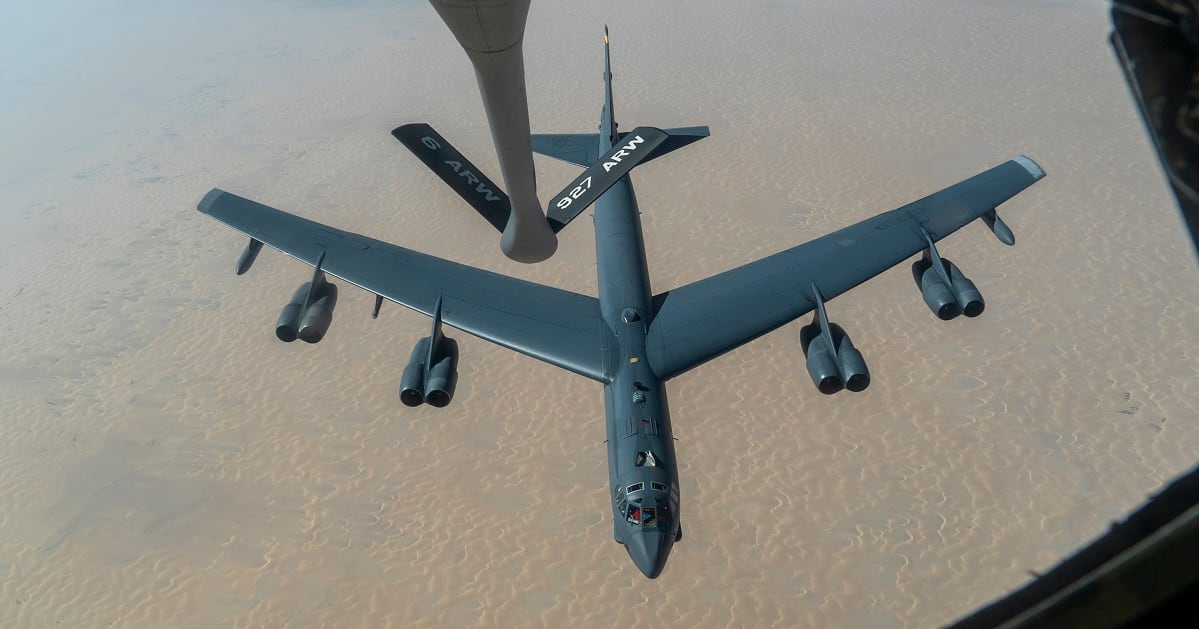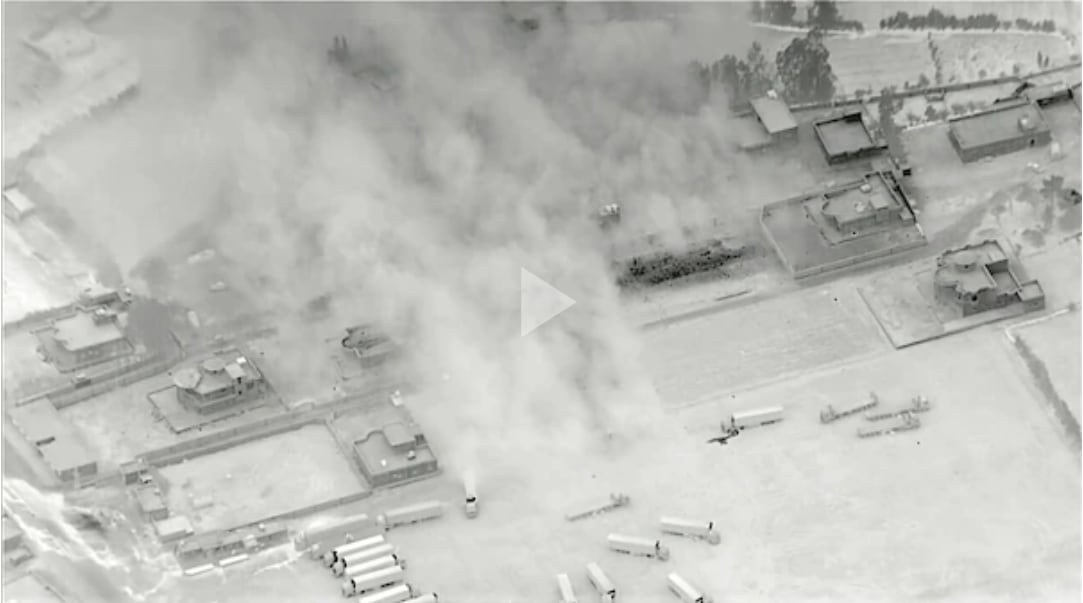Though the United States is still dropping ordnance on the Taliban and Islamic State group, the pace of U.S.-led airstrikes in the Middle East has slowed considerably in 2021. Reconnaissance flights appear to be tapering off as well, according to new figures provided to Air Force Times.
Since Jan. 1, manned and unmanned American and coalition aircraft have conducted more than 400 airstrikes across the Middle East in a sporadic yet enduring campaign to help local militaries keep the Taliban, Islamic State and other militias at bay, Air Forces Central Command said Aug. 6.
“It hasn’t been a consistent year,” AFCENT boss Lt. Gen. Gregory Guillot told Air Force Times in an Aug. 3 interview. “We might go a few days without any strikes, and then we’ll go through several days, at the time, in both Afghanistan and in Iraq and Syria, with 50 strikes in a row, and it’ll quiet down.”
Still, the organization never goes more than a few days without “significant kinetic activity,” Guillot said.
RELATED

Coalition assets have fired more than 1,100 munitions so far this year — a fraction of the volume in recent years, according to AFCENT. For example, international aircraft expended 3,700 munitions in Afghanistan, and nearly 3,900 in Iraq and Syria, in the first seven months of 2019.
Foreign partners that have previously conducted airstrikes in CENTCOM include Australia, Bahrain, Belgium, Canada, Denmark, France, Jordan, the Netherlands, Saudi Arabia, United Arab Emirates and the United Kingdom.
Since 2012, AFCENT — the organization that provides Air Force aircraft and personnel to the broader combat effort in the Middle East — has published monthly tallies of airstrikes, munitions dropped, surveillance sorties, jet fuel used and other metrics to measure the wars in Afghanistan, Iraq and Syria.
AFCENT stopped releasing that data after February 2020 and has not responded to a Freedom of Information Act request that Air Force Times filed in April for the previous 14 months of statistics.
The newly obtained information, provided by AFCENT in an interview and emails, appears to show a marked drop from the volume of airstrikes the Air Force has conducted in the first half of recent years.
In comparison, the two major air campaigns in the Middle East totaled around 2,125 airstrikes with at least one weapon released in 2019, nearly 1,000 in 2018 and about 7,900 in 2017.
However, military data obscures a true picture of the air wars. A single aircraft firing a single munition, or multiple aircraft employing several weapons, can both count as one airstrike.
RELATED

From Jan. 1, 2019 to July 31, 2019 — the last full year that AFCENT reported its airpower statistics — manned aircraft flew about 1,300 strike sorties where weapons were fired in Afghanistan, and around 825 in Iraq and Syria. That jumped from 500 airstrikes over the same time period in 2018 in Afghanistan, and 481 in Iraq and Syria. In the first seven months of 2017, coalition forces conducted 620 airstrikes in Afghanistan and more than 7,200 in Iraq and Syria — during the air campaign’s major push to whittle away Islamic State-controlled territory.
The command did not report the number of strikes conducted by unmanned aircraft like the MQ-9 Reaper drone in its previous airpower summaries.
About one-third of the airstrikes so far this year were part of an offensive against the Islamic State alongside Iraqi security forces in March. Over the course of a few weeks, airmen fired weapons around the clock to destroy camps where Islamic State fighters were trying to reconstitute their ranks in the Makhmour and Hamrin mountain areas.
James Jeffrey, the former American ambassador to Iraq and Turkey, and a special envoy to the global anti-Islamic State coalition, estimated earlier this year that as many as 16,000 Islamic State fighters may still be active in Iraq and Syria.
“Aircraft from the U.S. and three additional coalition partners conducted 133 precision airstrikes in [the] Qarachogh mountain range, destroying 61 hideouts, 24 caves and eliminating a number of terrorists,” spokesperson 1st Lt. Joshua Sinclair said in an Aug. 6 email.
More than 415,000 pounds of munitions were dropped as part of that operation, more than half of the 800,000 or so pounds employed by American and coalition aircraft in the Middle East so far this year. Sinclair did not answer which foreign partners or warplanes were involved in the operation.
“AFCENT aircrews maintain continual readiness and the ability to launch air strikes — generally in support of U.S. ground forces — within hours,” Sinclair said.
RELATED

Intel-gathering missions are slowing this year, too. In the first seven months of 2021, coalition intelligence, surveillance and reconnaissance aircraft flew more than 10,000 sorties throughout the Middle East — fewer than normal for the first half of the year.
ISR aircraft conducted more than 17,800 sorties in Afghanistan, Iraq and Syria in the same time frame in 2019, more than 8,800 sorties in the three countries in 2018 and more than 19,100 sorties there in 2017.
President Joe Biden’s withdrawal of U.S. forces from Afghanistan and parallel decision to end American combat missions in Iraq promises to lessen the U.S. footprint in the Middle East, but may not taper off air warfare entirely.
U.S. AC-130 gunships, B-52 bombers, F-15 fighter jets and drones are in action across Afghanistan, hoping to slow the Taliban’s stunning sweep through the country to take control of 10 provincial capitals so far in August, the AP and Task and Purpose reported this week.
RELATED

F-15 and F-16 fighters have also been active in Iraq and Syria this summer, taking out three Iran-backed militia facilities in those countries in retaliation for drone and rocket attacks on U.S. and coalition personnel.
“The latest U.S. military intelligence assessment suggests Kabul could come under insurgent pressure within 30 days and that, if current trends hold, the Taliban could gain full control of the country within a few months,” the Associated Press reported Thursday.
CENTCOM boss Gen. Frank McKenzie said earlier this year the U.S. would keep the option to launch airstrikes against the Taliban from elsewhere in the region in support of Afghan troops even after the final exit date of Sept. 11, and to offer continued funding and advising from afar. But last week, Biden said that air campaign would end Aug. 31.
“At this point, … based on everything else in the region, I don’t think it will be a huge change on what we need,” Guillot said of drawing down air assets across U.S. Central Command. “We could do less in some areas, but I just don’t know.”
Rachel Cohen is the editor of Air Force Times. She joined the publication as its senior reporter in March 2021. Her work has appeared in the Washington Post, the Frederick News-Post (Md.), Air and Space Forces Magazine, Inside Defense, Inside Health Policy and elsewhere.





